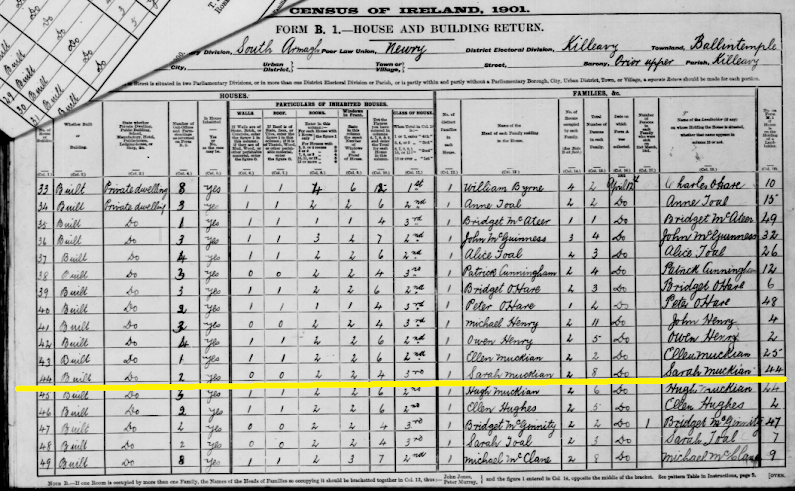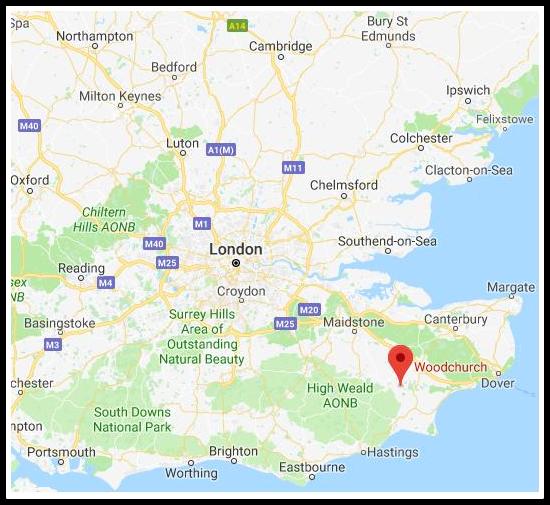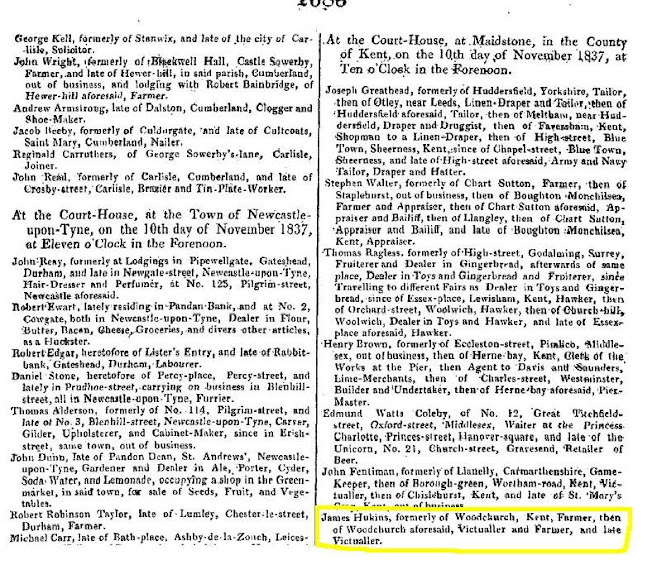Anniversary of a Birthday :
(For my 'Family Anniversaries' page)
*Our common ancestors are: Patrick Muckian and Sarah McCann.
- Edward (known as Ned) was born in November of 1854. Church records show he was baptised on the 24th of November in 1854, so it's likely he was born either a day or two before that.
- He was born in the small townland of Ballintemple, in the Civil Parish of Killevy (and the Catholic Parish of Lower Killeavy) in County Armagh, Northern Ireland.
- Edward was the first of five children born to Patrick Muckian (sometimes spelt as Muckean / Muchian) and Sarah McCann.
- After the birth of Edward came the births of Mary Elizabeth in 1856, Owen (my great grandfather) in 1859, John in 1863 and Anne (known as Nancy) in 1864.
- Edward grew up in a small community of mostly tenant farmers. In 1865, when Edward was 11 years old the Northern Ireland Valuation Record showed that the number of tenant farmers, including Edward's father, living and working in Ballintemple was 59. It would have been a close, tightly-knit population.
- It appears that Edward and his siblings lived on the farm tenanted by their father until they reached their early to late teenage years. By that time however, the farm would have been too small to continue supporting them all and the house itself would have become very cramped as it only had two rooms.
- It's very likely that all of Edward's siblings left home and went out to work when they were quite young, around the age of 14 to 15. The usual practice at the time was for children to start working in service at a nearby estate or perhaps go further afield and find labouring jobs, in the case of the boys.
- Mary Elizabeth married in 1880 at the age of 23. John married in 1887 at the age of 24. He had been working as a servant at the time, but emigrated to the U.S. the year after he married. Owen had moved to England in search of work when he was around the age of 20, and then emigrated to Australia in 1888 when he was 29. Anne (known as Nancy) married in 1891 when she was 26.
- Edward however was the one sibling who remained on the farm for his entire lifetime. He took over the working of the farm after the death of his father in 1887 and remained living on the farm until his death.
 |
| Photo showing Edward Muckian and his mother Sarah on Edward's wedding day in 1892. (Photo shared by my 3rd cousin Brian Rafferty) |
- Edward married Mary Anne Mallon in January of 1892 when he was 37 years old. They went on to have eight children over the following eighteen years:
- Patrick born 1895
- Owen born 1896
- Susan born 1898
- Mary born 1900
- Daniel born 1903
- Lizzie born 1910 and
- Rosaleen (known as Rose) born 1911
 |
| 1901 Census |
- The Census of Ireland for 1901 shows Edward, aged 40, living with his mother Sarah (listed as the head of the household), his wife Mary and five children.
- They were living in a small Class 3 house in Ballintemple, as recorded on the house & building return section of the census. The house had 2 rooms, walls made of perishable material such as mud or wood, a roof of thatch or wood, and two windows at the front. It would have been a tight fit for a family of eight!
- The Northern Ireland Valuation Revision Book for the Civil Parish of Killevy 1901-1911 indicates that Edward did not remain a tenant farmer however. He became a landholder when he purchased the block of land he had grown up on, as well as several other blocks around it. He did this in 1907, after the death of his mother. He was 52 years old at the time.
- The 1911 Census of Ireland shows Edward, now aged 58, living on the farm in Ballintemple with his wife Mary Ann, his eldest son Patrick, aged 17, his daughter Susan, aged 13 and his youngest child, Lizzie, aged 1.
- The eldest daughter Sarah Anne had married earlier that year and left home. Son Owen, aged 14, had likely left home and gone into service (although I have not yet found evidence of this). Son Daniel John was aged 7, but I have no idea where he was at this time! There was also another baby on the way as Edward's wife Mary Anne was pregnant at the time.
- Tragically, Edward's wife Mary Anne, aged 45, passed away the following year in 1912. The baby she had given birth to just a little over a year before, named Rosaleen, was taken in by Edward's and Mary Ann's eldest daughter, Sarah Anne and was raised in her home.
- Edward himself passed away not long after the death of his wife. He died in 1914, aged 59. The cause of death listed on his death certificate was: malignant disease of the bladder.
- Edward died at home on the farm and it was his 15 year old daughter Susan who was present at the time of his death and gave some of the details needed for her father's death certificate.
- He was the first of all his siblings to pass away and he was survived by five of his children.

















































